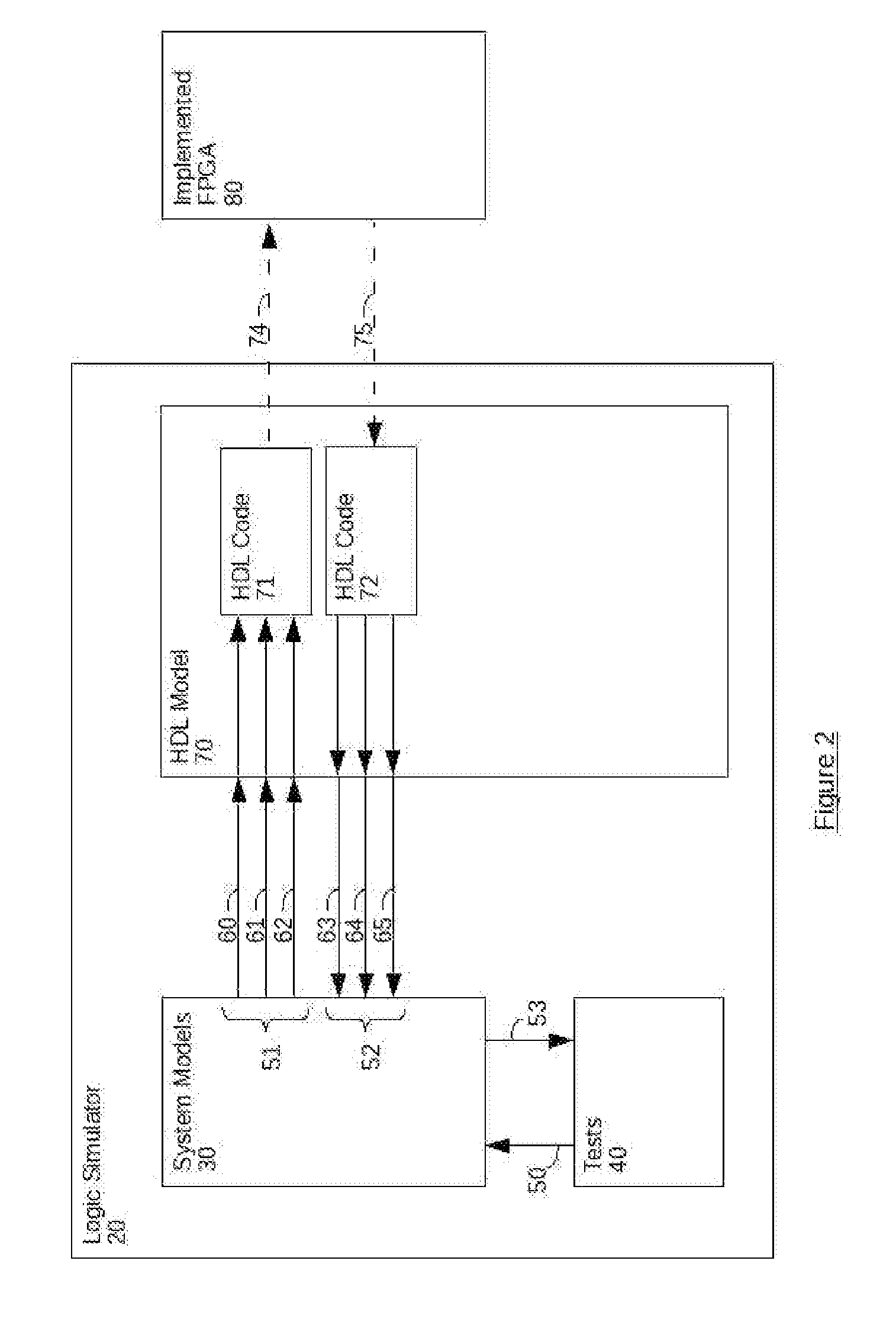Automated semiconductor design flaw detection system
a technology of automatic detection and semiconductors, applied in the field of automatic detection of semiconductor design flaws, can solve the problems of not providing any mechanism to compare the differences between physical and logical designs, logic simulators by themselves provide no information to compare realized physical implementation, and commercially available lvs tools
- Summary
- Abstract
- Description
- Claims
- Application Information
AI Technical Summary
Benefits of technology
Problems solved by technology
Method used
Image
Examples
Embodiment Construction
[0036]A description of example embodiments of the invention follows.
[0037]The steps and processes below are described in the context of FPGA design flows. Those skilled in the art will recognize that these processes and concepts apply to other areas such as application specific integrated circuit (ASIC) and software design, as well as design and implementation of other semiconductor devices.
RTL Coding
[0038]The register transfer level (RTL) coding process involves hand-crafting code that captures the intent of the hardware designer. Coding is a manual process and thus error prone. Furthermore, RTL, being a hardware description language (HDL), is subject to interpretation by those writing the code and software tools that consume it. Perfect alignment of language interpretation is required to avoid introduction of inadvertent behavior in hardware designers' code.
[0039]The implications of misaligned HDL interpretation manifest as divergent behavior between intended design function and a...
PUM
 Login to View More
Login to View More Abstract
Description
Claims
Application Information
 Login to View More
Login to View More - R&D
- Intellectual Property
- Life Sciences
- Materials
- Tech Scout
- Unparalleled Data Quality
- Higher Quality Content
- 60% Fewer Hallucinations
Browse by: Latest US Patents, China's latest patents, Technical Efficacy Thesaurus, Application Domain, Technology Topic, Popular Technical Reports.
© 2025 PatSnap. All rights reserved.Legal|Privacy policy|Modern Slavery Act Transparency Statement|Sitemap|About US| Contact US: help@patsnap.com



